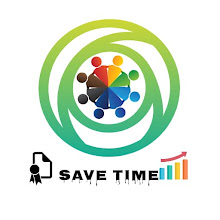There are number of literary devices which are used in this novel but the most important literary devices are mentioned below:
- Irony
- Symbolism
- Foreshadowing
- Gothic elements
- Personification
- Imagery
- Stream of consciousness
- Epic motif
- Theme of social class
- Moral ambiguity
Explanation of these literary devices in the context of Jane Eyre.
Irony :
The use of words to convey a meaning that is opposite of its literal or usual sense, often for humorous or rhetorical effect. In Jane Eyre, irony is used to underscore the themes of power and oppression, particularly in the relationship between Jane and Mr. Rochester.
"I am no bird; and no net ensnares me: I am a free human being with an independent will." (Jane Eyre, Chapter 1). This statement by Jane is an example of irony, as she is a governess who is being held captive in a sense by the strict rules and expectations of her society.
Symbolism:
The use of symbols to represent ideas or qualities, beyond the literal meaning of the objects. In Jane Eyre, symbols such as the red-room, the fire at Thorn Field, and the moon are used to represent themes such as confinement, passion, and freedom.
"I had the key in my hand, which key finally succeeded in opening the very door it was intended to keep shut." (Jane Eyre, Chapter 13). The key symbolizes Jane's quest for freedom and independence, and its success in opening the door represents her eventual triumph over the constraints of her society.
Foreshadowing :
The use of hints or clues to suggest events that will occur later in a story. In Jane Eyre, foreshadowing is used to build tension and create suspense, such as the mysterious events at Thornfield and the hints about Mr. Rochester's past.
"There was no putting a faintness into his words: the blaze of his eye lit up its whole character." (Jane Eyre, Chapter 14). This description of Mr. Rochester foreshadows the fiery and passionate nature of his character, which will play a significant role in the later events of the novel.
Gothic elements:
A style of writing characterized by elements such as mystery, suspense, supernatural events, and gloomy or haunted settings. In Jane Eyre, Gothic elements are used to create a haunting and atmospheric setting, such as the eerie and mysterious Thornfield Hall.
"I looked; I saw a woman in the moon, beckoning to me." (Jane Eyre, Chapter 25). This description of the moon as a beckoning woman is an example of Gothic imagery, creating a mysterious and eerie atmosphere in the novel.
Personification:
The attribution of human qualities or characteristics to non-human entities, such as animals, objects, or natural phenomena. In Jane Eyre, personification is used to create a vivid and imaginative setting, such as the depiction of the moors as a dark and brooding presence.
"The east, however, was blessed with a perfect sunrise: the clouds and sky were of one deep pink." (Jane Eyre, Chapter 30). This personification of the sunrise as "blessed" imbues the natural phenomenon with a sense of life and purpose, creating a vivid and imaginative setting.
Imagery:
The use of descriptive language to create vivid sensory experiences or to evoke emotions. In Jane Eyre, imagery is used to create a vivid and atmospheric setting, such as the descriptions of the moors and the depiction of Jane's feelings and emotions.
"I heard the rushing of wings; something seemed near me; I was oppressed, suffocated: endurance broke down; I shrieked." (Jane Eyre, Chapter 11). This description of Jane's sensations and emotions creates vivid sensory imagery, evoking a sense of fear and panic.
Stream of consciousness :
A narrative technique that depicts a character's thoughts, feelings, and sensations as they occur, without interruptions or filtering. In Jane Eyre, stream of consciousness is used to provide insight into Jane's inner life and thoughts.
"I wondered what Mrs. Fairfax thought about me, and whether she suspected or even noticed my hurry to enter the house." (Jane Eyre, Chapter 11). This depiction of Jane's thoughts and feelings as they occur provides insight into her inner life and thoughts.
Epic motif :
A recurring theme or pattern of events in an epic poem or narrative, such as a journey or a test of the hero. In Jane Eyre, the epic motif is used to structure the story and emphasize the themes of self-discovery and growth.
"I was going out on a journey, a pilgrimage: was it not so?" (Jane Eyre, Chapter 31). This statement by Jane represents the epic motif of a journey, which is a recurring theme in the novel and emphasizes the themes of self-discovery and growth.
Theme of social class:
The exploration of the relationships and power dynamics between characters from different social classes. In Jane Eyre, the theme of social class is used to explore the issues of oppression, power, and self-discovery, particularly in the relationship between Jane and Mr. Rochester.
"I am poor; I have nothing; I cannot keep you." (Jane Eyre, Chapter 26). This statement by Jane underscores the theme of social class, as she grapples with the limitations and expectations imposed by her social status.
Moral ambiguity:
The depiction of characters or actions that are morally complex or unclear, raising questions about right and wrong. In Jane Eyre, moral ambiguity is used to explore the themes of love, passion, and morality, particularly in the relationship between Jane and Mr. Rochester.
"I love and am loved by a better man than he." (Jane Eyre, Chapter 27). This statement by Jane raises questions about love, passion, and morality, as she grapples with her feelings for both Mr. Rochester and St. John Rivers, who are both morally complex characters.





0 Comments